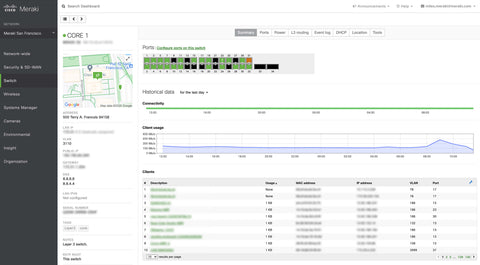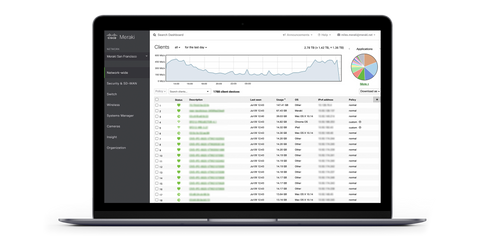Introduction
In today's fast-paced digital landscape, network performance is a crucial factor in ensuring smooth business operations and seamless user experiences. Slow and unreliable networks can hamper productivity and lead to frustration. Therefore, optimising network performance is vital to maximise speed, reliability, and overall efficiency. In this guide, we will explore effective strategies for enhancing network performance, focusing on improving speed and reliability. By implementing these strategies, you can create a high-performing network infrastructure that meets the demands of modern connectivity.
- Bandwidth Management:
Manage bandwidth effectively by prioritising critical traffic and controlling bandwidth usage. Use Quality of Service (QoS) mechanisms to allocate bandwidth based on application requirements. Prioritise real-time applications, such as voice and video, over non-essential traffic to ensure optimal performance for critical business operations.
- Network Monitoring and Analysis:
Implement network monitoring tools to gain visibility into network traffic, performance metrics, and potential bottlenecks. Analyse network data to identify bandwidth-hogging applications, pinpoint areas of congestion, and detect anomalies. This data-driven approach allows for proactive optimisation and timely troubleshooting.
- Optimize Network Infrastructure:
Evaluate your network infrastructure for potential bottlenecks and performance limitations. Upgrade switches, routers, and network interfaces to support higher speeds and advanced features. Ensure that cabling and physical connections are of high quality and properly maintained. By addressing infrastructure limitations, you can improve network speed and reliability.
- Network Segmentation:
Divide your network into logical segments using VLANs or subnets to control traffic flow and reduce congestion. Segmenting networks based on user groups, departments, or applications helps isolate traffic and prevent issues in one segment from affecting others. This segmentation optimises performance by reducing broadcast traffic and improving overall network efficiency.
- Implement Traffic Shaping:
Use traffic shaping techniques to regulate the flow of network traffic and prevent congestion. This involves setting bandwidth limits and prioritising traffic based on business needs. Traffic shaping ensures fair distribution of bandwidth, improves application performance, and avoids bottlenecks caused by excessive traffic.
- Optimize DNS Resolution:
DNS (Domain Name System) resolution can impact network performance. Ensure that your DNS servers are properly configured, and consider implementing local DNS caching or using DNS servers with low latency and high availability. Optimising DNS resolution reduces latency and improves browsing and application performance.
- Network Security Optimisation:
Implement robust security measures without compromising network performance. Employ efficient firewall rules, intrusion detection systems, and antivirus solutions that minimise latency and processing overhead. Regularly update security protocols and patches to protect against emerging threats while maintaining network speed and reliability.
- Load Balancing:
Distribute network traffic across multiple paths using load balancing techniques. Load balancers evenly distribute traffic among multiple servers or network links, optimising resource utilisation and preventing any single component from becoming overwhelmed. Load balancing improves performance and enhances network reliability.
- Regular Network Maintenance:
Perform regular maintenance activities such as firmware updates, device configuration audits, and network optimisation reviews. Stay up to date with vendor-recommended patches and firmware releases to address performance-related issues, security vulnerabilities, and feature enhancements.
- Continuous Performance Monitoring and Optimisation:
Network performance optimisation is an ongoing process. Continuously monitor network performance, analyse metrics, and make necessary adjustments based on changing demands. Regularly review network design, implement improvements, and seek opportunities for optimisation to ensure a high-performing and reliable network infrastructure.
Conclusion
Optimising network performance is crucial to meet the demands of modern connectivity. By implementing strategies such as bandwidth management, network monitoring, infrastructure optimisation, and traffic shaping, you can enhance network speed and reliability. Additionally, network segmentation, DNS optimisation, load balancing, and regular maintenance activities contribute to a high-performing network. Continuous monitoring and optimisation ensure that your network infrastructure remains efficient and responsive to evolving business needs. By prioritising network performance optimisation, you can create a robust and reliable network environment that empowers your organisation to thrive in the digital age.


